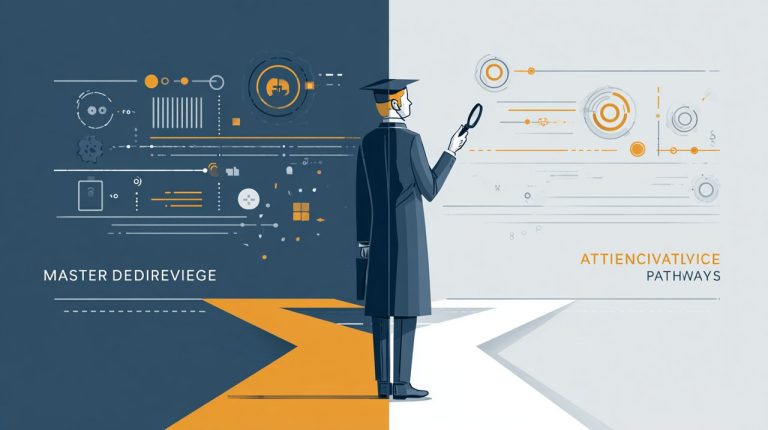The weight of debt can feel like a heavy anchor, pulling you down and making every financial decision a struggle. I know that feeling all too well. Years ago, I found myself staring at a mountain of student loans and credit card bills, wondering if I’d ever see the other side. It felt isolating, frustrating, and honestly, a little scary. But I’m here to tell you: it’s possible to break free. Through trial and error, a lot of learning, and a commitment to practical action, I found my way out. And now, as your fellow traveler on this path, I want to share the exact strategies and tools that made the difference for me and for countless others I’ve guided. This isn’t about quick fixes; it’s about building a sustainable system to reclaim your financial power. Let’s break this down step-by-step.

1. Create a Detailed Debt Inventory
Debt Payoff Strategy Calculator
Find the fastest path to being debt-free. Add your individual debts and your total monthly payment to compare the Avalanche and Snowball payoff strategies.
Step 1: List Your Debts
Step 2: Define Your Monthly Payment
This is the total amount you can commit to all debts each month. It must be more than the sum of your minimum payments.
Core Method: List every single debt you owe, no matter how small, along with its specifics.
Principle & Value: You can’t conquer what you don’t fully understand. This step provides a crystal-clear picture of your financial battlefield. It removes the ambiguity and emotional burden of “unknowns,” transforming vague anxiety into concrete data points you can act upon. My experience is, when you see it all laid out, the problem becomes less abstract and more manageable.
Personal Story & Instance: When I first tackled my debt, I had a vague idea of what I owed, but it was scattered across different accounts and mental notes. The moment I wrote down every credit card, every loan, its balance, interest rate, and minimum payment on a single spreadsheet, it was a profound shift. It wasn’t pleasant to see the total, but for the first time, I felt like I had a handle on the beast, not the other way around.
Actionable Tip: Open a simple spreadsheet (Google Sheets or Excel works great) or even a notebook. Create columns for: Creditor Name, Current Balance, Interest Rate, Minimum Payment, and Due Date. Fill it out meticulously.
My go-to here is: Don’t just list the big ones. Include everything: medical bills, personal loans, even that old store credit card you rarely use. Every penny counts.
2. Build a Realistic Budget (and Stick to It)
Core Method: Design a spending plan that tracks every dollar coming in and going out, prioritizing debt repayment.
Principle & Value: A budget isn’t about deprivation; it’s about intentional spending. It shows you exactly where your money is going and where you can redirect funds towards debt. This is the bedrock of any financial recovery. Without it, you’re flying blind.
Personal Story & Instance: For years, I avoided budgeting because it felt restrictive. But when I committed to getting out of debt, I realized it was actually liberating. I started with a simple “zero-based budget” where every dollar had a job. I remember finding an extra $200 a month by just cutting down on takeout coffee and unused subscriptions. That $200 became my ‘debt attack’ fund, and it felt incredibly empowering.
Actionable Tip: Use a budgeting app like You Need A Budget (YNAB) or Mint. Both offer excellent tools for categorizing expenses and setting spending limits. If you prefer a simpler approach, the “envelope system” for cash expenses can be incredibly effective. Review your budget weekly to ensure you’re on track.
3. Implement the Debt Snowball or Avalanche Method
Core Method: Choose a strategic approach to pay off debts: either smallest balance first (snowball) or highest interest rate first (avalanche).
Principle & Value: Both methods provide a structured way to systematically eliminate debt. The snowball method (smallest balance first) offers psychological wins, building momentum as you quickly pay off smaller debts. The avalanche method (highest interest rate first) saves you the most money on interest over time. You might want to try the one that aligns best with your motivation.
Personal Story & Instance: I initially leaned towards the avalanche because, logically, it made the most sense to save money. But after feeling discouraged by slow progress on a large student loan, I switched to the snowball for a few smaller credit cards. The feeling of paying off that first tiny card was electrifying! It gave me the motivation to keep going, and I eventually combined both approaches, using the snowball for momentum and the avalanche for efficiency on larger debts.
Actionable Tip:
- Snowball: List debts from smallest to largest balance. Pay minimums on all but the smallest, then throw every extra dollar at that smallest debt. Once it’s paid, take the money you were paying on it (minimum + extra) and add it to the next smallest debt’s payment.
- Avalanche: List debts from highest to lowest interest rate. Pay minimums on all but the highest interest debt, then direct all extra funds to that one. Once paid, move to the next highest interest debt.
4. Negotiate with Creditors
Core Method: Directly contact your creditors to discuss options for reducing interest rates, waiving fees, or setting up more manageable payment plans.
Principle & Value: Creditors want to get paid, and they’d often prefer to work with you than send your account to collections or write it off. Many are willing to negotiate, especially if you’re proactive and honest about your situation. This can significantly reduce the total cost of your debt and make payments more affordable.
Personal Story & Instance: I was hesitant to call my credit card company; it felt like admitting defeat. But one afternoon, after a particularly tight month, I gathered my courage. I explained my commitment to paying off my debt and asked if there were any programs for a reduced interest rate. To my surprise, they lowered my rate by almost 5%! It wasn’t a magic bullet, but that one phone call saved me hundreds of dollars in interest and made my monthly payments more impactful.
Actionable Tip: Before calling, have your account numbers, a clear understanding of your budget, and a proposed payment amount ready. Be polite but firm. Start by asking, “Are there any hardship programs or interest rate reduction options available for my account?” If the first person says no, politely ask to speak to a supervisor.
5. Increase Your Income (Even Temporarily)
Core Method: Find ways to bring in more money, even if it’s just for a short period, to accelerate debt repayment.
Principle & Value: While cutting expenses is crucial, there’s a limit to how much you can cut. Increasing your income, however, has almost unlimited potential. Every extra dollar you earn can be directly funneled into debt repayment, dramatically shortening your debt-free journey.
Personal Story & Instance: For a few months, I took on freelance writing gigs in the evenings and on weekends. It wasn’t glamorous, and it definitely ate into my free time, but the extra $300-$500 a month I earned was a game-changer. That money went straight to my highest-interest credit card, and I saw the balance drop much faster than I ever could have with just budgeting alone. It was hard work, but the progress was incredibly motivating.
Actionable Tip:
- Side hustles: Freelancing (writing, graphic design, virtual assistant), delivery services (Uber Eats, DoorDash), pet sitting, tutoring.
- Selling unused items: Use platforms like eBay, Facebook Marketplace, or local consignment shops.
- Overtime at work: If your job offers it, volunteer for extra shifts.
- Temporary part-time job: Even a few hours a week can make a difference.
6. Cut Unnecessary Expenses Ruthlessly
Core Method: Identify and eliminate non-essential spending to free up more cash for debt payments.
Principle & Value: This is where your budget truly shines. By meticulously tracking your spending, you’ll uncover “money leaks” – expenses that aren’t adding significant value to your life but are siphoning away funds that could be used to attack debt. My go-to here is to think of it as a temporary ‘financial cleanse’.
Personal Story & Instance: When I was deep in my debt payoff journey, I went through every single recurring expense. I canceled streaming services I barely watched, paused my gym membership during a period I was exercising outdoors, and brought my lunch to work every single day. One time, I even sold a gaming console I rarely used. It felt drastic at the time, but seeing my debt balance shrink faster was worth every temporary sacrifice. It taught me the true value of every dollar.

Actionable Tip: Review your bank and credit card statements for the last three months. Highlight anything that isn’t absolutely essential. Ask yourself: “Do I truly need this right now, or can this money go towards my debt freedom?”
You might want to try: The “no-spend challenge” for a week or even a month to see how much you can truly save.
7. Create a Debt Repayment Calendar
Core Method: Visualize your debt payoff journey by plotting out due dates and planned payments on a calendar.
Principle & Value: This tool transforms an abstract goal into a tangible timeline. Seeing the finish line, even if it’s years away, provides immense motivation and helps you stay organized. It also reduces the risk of missed payments, which can incur late fees and damage your credit score.
Personal Story & Instance: After getting my debt inventory in order, I created a simple calendar. For each debt, I marked its due date and the amount I planned to pay (minimum + extra). As I paid off each debt, I’d cross it off the calendar. It was incredibly satisfying. That visual representation, seeing fewer and fewer lines on my calendar, kept me focused and reminded me of my progress during discouraging moments.
Actionable Tip: Use a large wall calendar, a digital calendar (Google Calendar, Outlook Calendar), or even a printed spreadsheet. Mark all your payment due dates. As you make payments, physically cross them off or change their color to green. This visual progress is a powerful motivator.
8. Automate Your Debt Payments
Core Method: Set up automatic payments for your minimums (and ideally, your extra principal payments) to ensure consistency and avoid late fees.
Principle & Value: Automation takes the guesswork and procrastination out of debt repayment. It ensures you never miss a payment, protecting your credit score and avoiding costly late fees. It creates a seamless workflow where your money moves towards your goals without constant manual intervention.
Personal Story & Instance: Early on, I’d sometimes forget a payment or pay late, incurring fees. It was frustrating and felt like I was sabotaging my own efforts. Once I set up automatic minimum payments for all my debts, and then a separate, recurring transfer for my extra ‘debt attack’ money to the target debt, everything changed. I didn’t have to think about it; the system just worked. It freed up mental energy to focus on other areas of my life.
Actionable Tip: Log into your bank’s online portal or directly with your creditors. Set up automatic transfers for your minimum payments. If using the snowball/avalanche, also set up a recurring transfer from your checking account directly to the principal of your target debt, ideally on your payday.
9. Avoid Taking on New Debt
Core Method: Commit to a strict “no new debt” policy while you are actively paying off existing obligations.
Principle & Value: This might seem obvious, but it’s a critical rule that’s often broken. Taking on new debt while trying to pay off old debt is like trying to empty a bathtub with the tap still running. It undermines all your hard work and can trap you in a never-ending cycle.
Personal Story & Instance: There were moments when I was tempted to put a large purchase on a credit card, telling myself I’d pay it off quickly. But I learned to pause. Instead of reaching for the plastic, I’d ask myself, “Do I need this, or do I want this?” More often than not, it was a want. I started saving for those purchases instead, which forced me to wait and truly evaluate their necessity. It was a tough habit to break, but essential for forward progress.
Actionable Tip: Cut up or freeze your credit cards (literally, put them in a block of ice). Carry only debit cards or cash. For any significant purchase, implement a a “30-day rule”: if you still want it after 30 days, save up and pay cash.
10. Celebrate Milestones and Stay Motivated
Core Method: Acknowledge and celebrate your progress throughout your debt payoff journey, no matter how small.
Principle & Value: Debt repayment is a marathon, not a sprint. It can be a long and challenging process, and it’s easy to get discouraged. Celebrating milestones, even small ones, provides crucial psychological boosts, reinforces positive habits, and helps maintain motivation when the going gets tough.
Personal Story & Instance: When I paid off my first credit card, I didn’t go on a shopping spree. Instead, I treated myself to a nice meal out at my favorite local spot – something I hadn’t done in months. When I paid off a student loan, I allowed myself to buy a book I’d been wanting. These weren’t expensive rewards, but they were meaningful. They marked progress and reminded me that my sacrifices were leading to tangible results.
Actionable Tip:
- When you pay off your first small debt: A special coffee, a long walk in nature, a movie night at home.
- When you reach a certain percentage of debt paid off (e.g., 25%, 50%): A new book, a picnic in the park, a small item you’ve been saving for.
- When you become completely debt-free: A bigger celebration, perhaps a weekend getaway, but still within a responsible budget.
Getting out of debt isn’t just about numbers; it’s about transforming your relationship with money and building a foundation for true financial freedom. It won’t always be easy, but I promise you, every step forward, every sacrifice, is worth it. You have the power to change your financial story. What’s your first step going to be? Pick one of these tips, start small, and build momentum. The journey to a debt-free life begins with that first intentional action. You’ve got this!
💡 Frequently Asked Questions
The first step is to create a detailed debt inventory. This involves listing every single debt you owe, no matter how small, along with its specific balance, interest rate, minimum payment, and due date. This provides a clear picture of your financial situation.
The two main strategies are the Debt Snowball and Debt Avalanche methods. The Snowball method focuses on paying off the smallest balance first for psychological wins, while the Avalanche method prioritizes paying off the debt with the highest interest rate first to save the most money over time.
Budgeting is the bedrock of any financial recovery because it helps you track every dollar coming in and going out. It shows exactly where your money is going and where you can redirect funds specifically towards debt repayment, making your spending intentional.
Yes, the article suggests directly contacting your creditors to discuss options like reducing interest rates, waiving fees, or setting up more manageable payment plans. Creditors often prefer to work with you than send your account to collections, and many are willing to negotiate.
The most important rule is to commit to a strict 'no new debt' policy. Taking on new debt while trying to pay off old debt undermines all your hard work and can trap you in a never-ending cycle, similar to trying to empty a bathtub with the tap still running.








